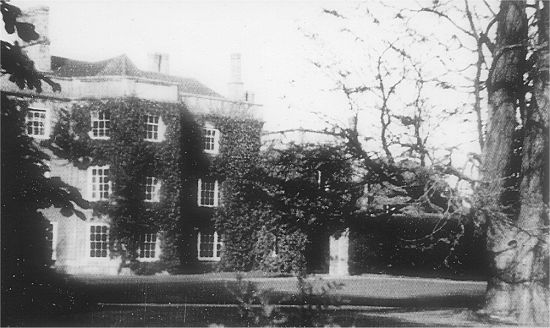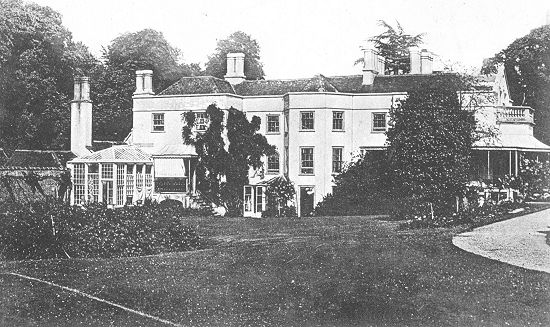|
The Westwood Estate was once one of the major properties in Normandy. Today, the remaining part is represented by the mansion and its immediate grounds known as Westwood Place. It stands on the west side of the road which runs from the Guildford Road at Wyke to the Hogs Back. This route was from the earliest times an important trade road crossing another ancient way at Christmas Pie before connecting with the prehistoric trackway along the ridge of the Hogs Back. An early mention of Westwood appears in the "Pleas of the Forest of Windsor", dating from the reign of King Henry III. The history of Westwood in medieval times is inextricably bound up with that of the Manor of Wyke, the descent of which is somewhat tortuous. In the reign of Henry VIII the estate belonged to the Creswell family and then to the Vynes. The Farrers held it until 1643 when it was sold to Robert Terry. In 1702 the property was conveyed to the Rev. Charles Moore, Rector of Worpledon but in 1720 he sold it to John de Coussmaker and this began a 200 year association of this family with Westwood. John de Coussmaker was a native of the Low Coutries who made his home in England in about 1700. Tradition has it that he followed in the train of William of Orange who took the throne of England at the "Glorious Revolution" of 1688. John de Coussmaker acquired property in London and Weybridge but when
he bought Westwood it was for the opportunities afforded for hunting and
sport. He was also a friend of the Onslow family of Clandon who owned the
adjacent Manor of Wanborough. The first alteration involved the removal of part of this farmhouse and the building of the brick structure now known as The Queen Anne House. This is believed to have been intended as a hunting box for the estate. The house was again extended in about 1780 when the main central part was built. This is in a Palladian style associated with Sir Robert Taylor whose best known work is at Asgill House in Richmond, Surrey. Meanwhile, the land holding of the estate was being extended by the purchase
of nearby properties. The Glaziers smallholding was bought from Mary Webb
in 1799 and in 1802 a major acquisition was Lower Westwood Farm which added
another 70 acres to the estate. Another large addition was an area of common
land awarded under an Enclosure Act in 1829. When the railway was built
in 1856, it cut off part of Christmas Pie Farm from the main part of the
property and the opportunity was taken to add this to the Westwood estate.
It thus attained its greatest extent of 450 acres. But towards the end of the 19th century agricultural depression had set in and the landed classes who depended upon returns from their estates were struggling to make ends meet. The situation was compounded later by new legislation increasing taxation and death duties. The Couusmaker family moved out of the mansion and took up residence at Wyke Lodge. The mansion was let to Lieutenant Lewis Vivian Loyd and then to Sir Arthur Mackworth.. The Coussmaker family once again resided at the mansion when Colonel George Coussmker resigned his commission and returned from India, but by the time of his death in 1924, conditions had worsened and in 1935 it was decided to put the whole of the estate up for sale, with the exception of the mansion. The family continued to live in the house until 1961 when it was bought by the development company, Windlesham Park Ltd., who converted the house into five self-contained apartments named from north to south as The Tudor Cottage, The Queen Anne House, First and Second Georgian and The Regency House . In 1966 the Regency House was split into two apartments. So the house was saved from destruction and remains a prestigious building. Some notable people have lived in the apartments at various times including Sir Winston Churchill's wartime private secretary and Roger Black, sprinter, Olympic Gold Medallist and broadcaster
A comprehensive history of the Westwood Estate and the Coussmaker family, written by Pat Ashworth and Jack Kinder and published in 1998 under the Title "Westwood, Normandy, The Story of a Surrey Estate" ISBN 0-9533906-0-8, is now unfortunately out of print.
|


